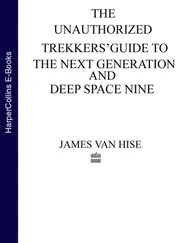The developers who designing new engines, need to know what and how the physical processes affected to the transformation of the construction during the engine operation, which should be reflected in the developed projects.
The developers are not paying enough attention to these “physical processes”. We will consider in more detail what processes and in what part of the engine, cause changes. And what changes on which engine operation and its efficiency are depend.
The main source of changes in the engine is the cylinder-piston group, in which the main physical and chemical processes occur. They naturally affect to the operation of the engine. The cylinder-piston group determines not only the dimensions of the main engine elements, the connecting rod, the crankshaft and etc., but also the shape of the engine. Let’s try to figure this out.
The efficiency of any power device is estimated by the value of the efficiency, tending to unity, depending on the complex of various losses accompanying the operation of this device.
The specifics of internal combustion engines are that, in addition to the normal mechanical losses on the frictionof the mobile elements of the kinematic system, there are gas dynamic losses, hydrodynamic losses(motor oil) and thermodynamic losses.
The thermodynamic changes in the engine during its operation have a significant effect on the efficiency of the cylinder-piston group. The thermodynamics changes the shape and dimensions of the cylinder, the piston, the piston rings, and it almost affects on all the processes that occur in the engine.
The engine losses may be objective, because of any physical process occurring within the construction, which is difficult for the developer and user to use during the operation of the product. But they can also be subjective because of the human factor that allows mistakesin the design, manufacture and operation of an energy device.
To significantly increase the efficiency of the engine, it was necessary to identify these errors and propose designs that exclude these losses, or reduce them to a negligible minimum. The example above shows that the opponent of the KAMAZ engine, the losses is much smaller and this naturally affects the efficiency of the engine, its shape and content.
The above losses, in general, should be attributed to the cylinder-piston engine group, which is rightly considered the “heart” of the motor that determines the technical and economic characteristics and ecological indicators of the engine. Low efficiency of the modern engine, this is, first of all, evidence of imperfection of the CPG engine and the errors committed during its design.
§1. Influence of the gas dynamics on the operation of a piston sealing ring
From the losses considered, it is necessary to highlight, as priority, gas-dynamic losses that affect the main working processes occurring in the combustion chamber and in the engine cylinder, as a result, on the efficiency of the engine.
The researches have shown that when analysis of various losses characteristic of the internal combustion engine and affecting on the value of its efficiency, the main task was to determine the location of each of them identify the priorities and influence on other groups of losses. Two groups of losses – mechanical and gas dynamic apply for the first post.
Let’s start with the dynamics. The domestic scientists and specialists mechanics, belong indulgently to gas dynamics as to the factor exerting serious impact on work of the ICE. In the best case, the gas dynamics for them is “leakage of the working gas”, determined for a single piston ring [5].
An analysis of the accuracy and value of the gaps in domestic engines shows that the theoretical calculations of the German scientist in determining the value of “leakage of working gas” have not found wide application in our country. – In the following, we consider some constructions, where the role of “leaks” is reduced to an insignificant minimum.
Turn to the materials in the domestic textbooks. “When the ring is compressed and inserted into the cylinder, it takes a cylindrical shape and exerts a pressure on the cylinder walls equal to 0,05 … 0,3 MPa (0,5 … 3 kg / cm 2) and more. During operation, the pressure increases of the ring on the walls, since gases penetrating through the gaps between the ring and the piston press the ring against the wall of the cylinder”[6].
About the same, in 10 years. “The sealing is carried out by pressing the ring against the cylinder wall by the elasticity of the ring and the pressure of the gases. At the moment of flare when the piston is in upper dead center (UDC), the pressure in the groove of the 1st ring is close to the pressure P zin the cylinder, and in the groove of the 2nd ring it is only 50% of this value. Pressure P 3behind the last ring is much smaller; it is commensurate with the pressure in the crankcase of the engine. In view of the considerable pressure of the rings on the cylinder walls, the majority of the work of friction in the engine (up to 50%, and sometimes up to 60%) falls on the rings, so it is impossible to press the rings with excessive force”[7].
The conclusions drawn by scientists on the one hand are quite obvious, and on the other hand inferior, are of a general nature, having little effect on the process of designing the piston rings. There is no answer to the main question: how, and with what efforts does the pressure of working gases in the cylinder act on the sealing piston ring?
The process of constantly changing pressure of intake air into a cylinder, then mixed together with the fuel in the combustion chamber and transfused into working gases, should be considered as a gas dynamic process.
In 2004 for the first time the author published the gas-dynamic scheme of operation of the compression ring of the KAMAZ engine on the basis of an analysis of the established attitude of scientists and specialists of mechanics to gas dynamics [1]. This is how the design and position of the compression ring look without any slopes of the upper end face and chamfers along the inner diameter (Figure 1).
It was necessary to remember and use the known physical law, in the appendix to the given case it can sound as follows:
On the free surfaces of the piston ring (upper end and inside vertical surface) located in the closed space limited to a cylinder wall, a bottom of a piston groove and its upper and lower shelves which is under pressure of working gases, there are forces proportional to the areas of these surfaces

Figure. 1. The gas dynamic scheme of the operation of the compression ring of the KAMAZ engine:1-A CYLINDER 2-A PISTON; 3-A PISTON RING
Breaking through the gap between the piston 2 and the cylinder 1 into the upper piston groove, the working pressure presses the piston ring 3 to the lower shelve of the piston groove with the gas-dynamic force F 0, and to the cylinder wall by the radial force F radand the force of intrinsic elasticity F seal. The calculation of these forces was provided in the author’s previous publications.
The most interesting can be seen in this calculation for one of the most popular domestic engines of VAZ-2190, with the following parameters: the maximum pressure of the working gases in the cylinder when the piston is at top dead center, is about P work= 80 kg / cm 2. The dimensions are in centimetres for convenience of calculations. Diameter of the cylinder is 82 mm = 8.2 cm; the outer radius r 1is 41 mm = 4.1 cm; the inner radius is r 2—38 mm = 3.8 cm; the radial thickness of the ring t = 3.0 mm = 0.3 cm; the height of the upper compression ring h = 1.5 mm = 0.15 cm.
Читать дальше













